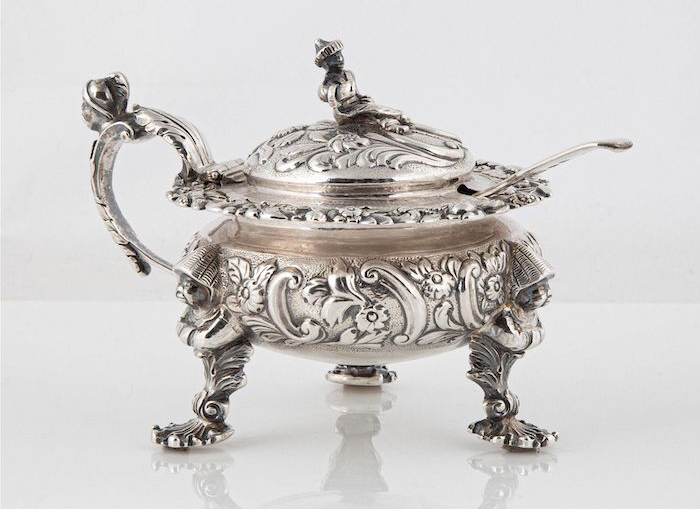[av_heading heading=’English silver mustard pots add spice to your table’ tag=’h1′ style=” subheading_active=” show_icon=” icon=’ue800′ font=’entypo-fontello’ size=” av-desktop-font-size-title=” av-medium-font-size-title=” av-small-font-size-title=” av-mini-font-size-title=” subheading_size=” av-desktop-font-size=” av-medium-font-size=” av-small-font-size=” av-mini-font-size=” icon_size=” av-desktop-font-size-1=” av-medium-font-size-1=” av-small-font-size-1=” av-mini-font-size-1=” color=” custom_font=” subheading_color=” seperator_color=” icon_color=” margin=’,,35px,’ av-desktop-margin=” av-desktop-margin_sync=’true’ av-medium-margin=” av-medium-margin_sync=’true’ av-small-margin=’,,20px,’ av-mini-margin=” av-mini-margin_sync=’true’ headline_padding=” headline_padding_sync=’true’ av-desktop-headline_padding=” av-desktop-headline_padding_sync=’true’ av-medium-headline_padding=” av-medium-headline_padding_sync=’true’ av-small-headline_padding=” av-small-headline_padding_sync=’true’ av-mini-headline_padding=” av-mini-headline_padding_sync=’true’ padding=’10’ av-desktop-padding=” av-medium-padding=” av-small-padding=” av-mini-padding=” icon_padding=’10’ av-desktop-icon_padding=” av-medium-icon_padding=” av-small-icon_padding=” av-mini-icon_padding=” link=” link_target=” title_attr=” id=” custom_class=” template_class=” av_uid=’av-lqgmzzhp’ sc_version=’1.0′ admin_preview_bg=”][/av_heading]
[av_post_metadata post_selected=” seperator=’ | ‘ before_meta_content=’Roland Arkell |’ after_meta_content=” margin=” margin_sync=’true’ padding=’,,35px,’ av-desktop-margin=” av-desktop-margin_sync=’true’ av-desktop-padding=” av-desktop-padding_sync=’true’ av-medium-margin=” av-medium-margin_sync=’true’ av-medium-padding=” av-medium-padding_sync=’true’ av-small-margin=” av-small-margin_sync=’true’ av-small-padding=” av-small-padding_sync=’true’ av-mini-margin=” av-mini-margin_sync=’true’ av-mini-padding=” av-mini-padding_sync=’true’ align=’left’ custom_title=” size=” av-desktop-font-size=” av-medium-font-size=” av-small-font-size=” av-mini-font-size=” alb_description=” id=” custom_class=” template_class=” av_uid=’av-lqgn08eg’ sc_version=’1.0′ admin_preview_bg=”]
[av_metadata_item metadata=’published’ before_meta=” after_meta=” link_meta=’default’ link_target=” av_uid=” sc_version=’1.0′]
[av_metadata_item metadata=’categories’ before_meta=’in’ after_meta=” link_meta=’default’ link_target=” av_uid=” sc_version=’1.0′]
[/av_post_metadata]
[av_textblock fold_type=” fold_height=” fold_more=’Read more’ fold_less=’Read less’ fold_text_style=” fold_btn_align=” textblock_styling_align=” textblock_styling=” textblock_styling_gap=” textblock_styling_mobile=” size=” av-desktop-font-size=” av-medium-font-size=” av-small-font-size=” av-mini-font-size=” font_color=” color=” fold_overlay_color=” fold_text_color=” fold_btn_color=’theme-color’ fold_btn_bg_color=” fold_btn_font_color=” size-btn-text=” av-desktop-font-size-btn-text=” av-medium-font-size-btn-text=” av-small-font-size-btn-text=” av-mini-font-size-btn-text=” fold_timer=” z_index_fold=” av-desktop-hide=” av-medium-hide=” av-small-hide=” av-mini-hide=” id=” custom_class=” template_class=” av_uid=” sc_version=’1.0′]
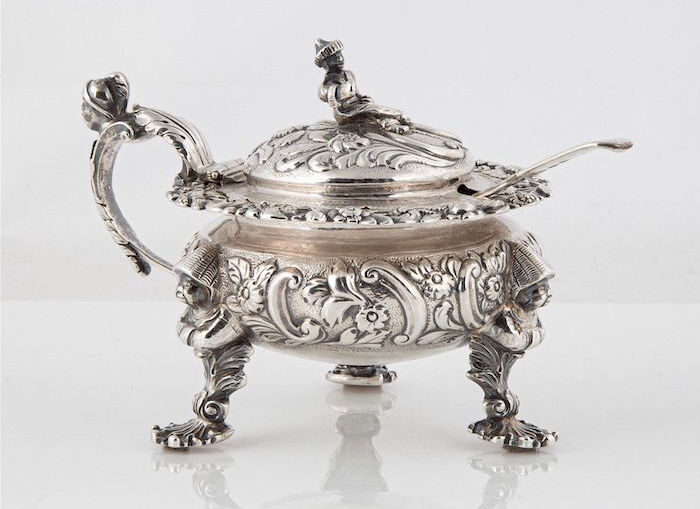
NEW YORK – Mustard has been used as a medicine and a spice for millennia. A yellow mustard paste was used to whet the appetite in the courts of Zhou dynasty China and to flavor hot and cold meats by the Romans. The use of mustard as a condiment and a pick-me-up in England is attested by medieval ‘herbals’ describing the preparation of mustard balls – golf-ball-sized spheres of coarsely-ground mustard seed, bound with flour and cinnamon, which could be stored and then mixed with wine, milk or vinegar when required for the table. Production in France was centered in Dijon and in England at Tewksbury. As early as the 1600s, mustard was a figure of speech for something extremely powerful, passionate, or enthusiastic. Shakespeare’s Falstaff said of Pions “that his wit is as thick as Tewkesbury Mustard”.
Exactly what sort of silver vessels were used to serve wet mustard at the Tudor table in the best English houses is uncertain. None have survived. Instead, the earliest surviving form of English mustard pot is the blind caster used to dispense a dry mustard powder that became fashionable in the early 18th century. A Mrs. Clements of Saddler Street in Durham is considered the first person to sell English mustard as a finely ground powder.
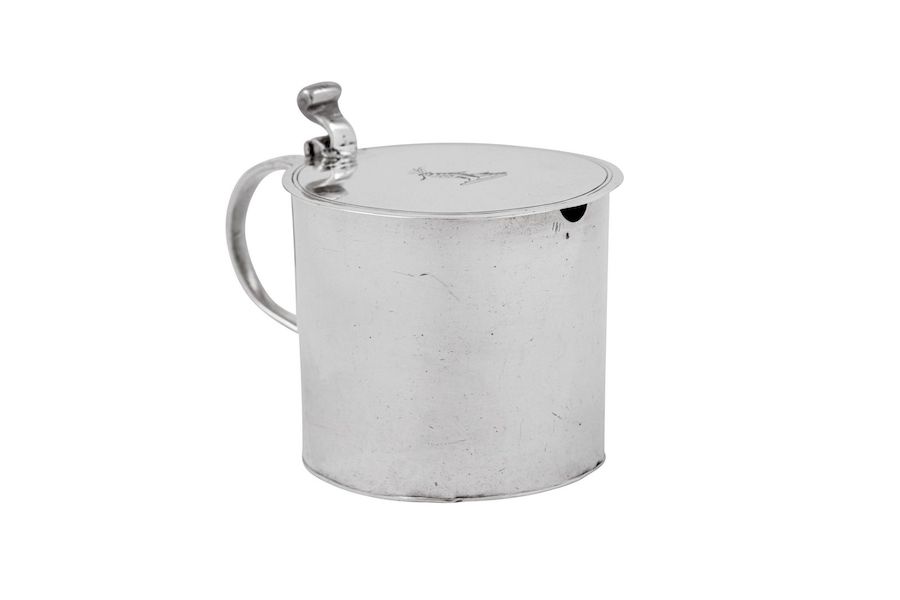
Only rarely do these Queen Anne or George I period casters appear for sale. Far more common are the classic Georgian ‘drum’-form mustard pots – known at the time as mustard tankards or cans – that first emerged in the second half of the 18th century as the fashion changed from dry to wet mustard. This is where most collectors begin their quests.
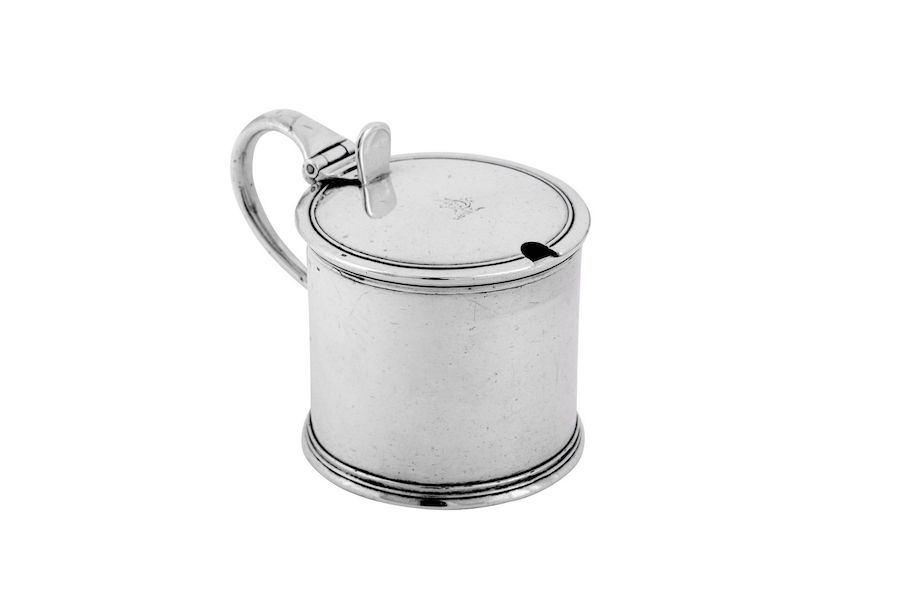
There are numerous survivors and, as two models are seldom exactly alike, most collectors seek to own multiple examples. Some of the earliest of the drum-form pots from the 1760s and early 1770s have an aperture for the spoon cut out of the top rim rather than the edge of the lid, which later became common. Most show the influence of the neoclassical Adam style, while the introduction of glass liners, which made cleaning much easier, allowed for open-work containers contrasting fretwork with colored or clear glass.
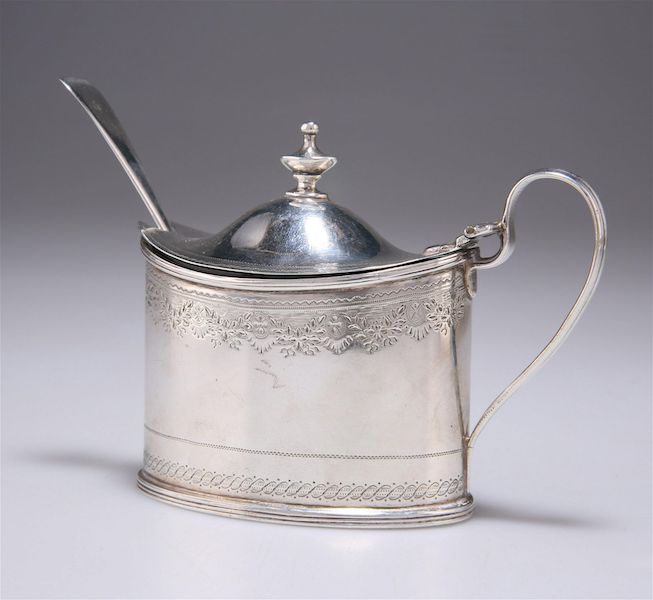
By the Victorian era, multiple styles of mustard pot existed side-by-side – the gothic, the neoclassical, the naturalistic and the whimsical. Most popular of all were the novelties. From the 1850s, mustard pots and cruets appeared in a wide range of cast and chased forms designed to amuse, from animals (monkeys, owls, cats and pigs were particularly cherished), literary characters (the distinctively British figure of Mr. Punch was a favorite, made in several different guises) to miniature models of drums, fruit or hats. Some of these designs carry registration marks, indicating they were guarded at the time as intellectual property.
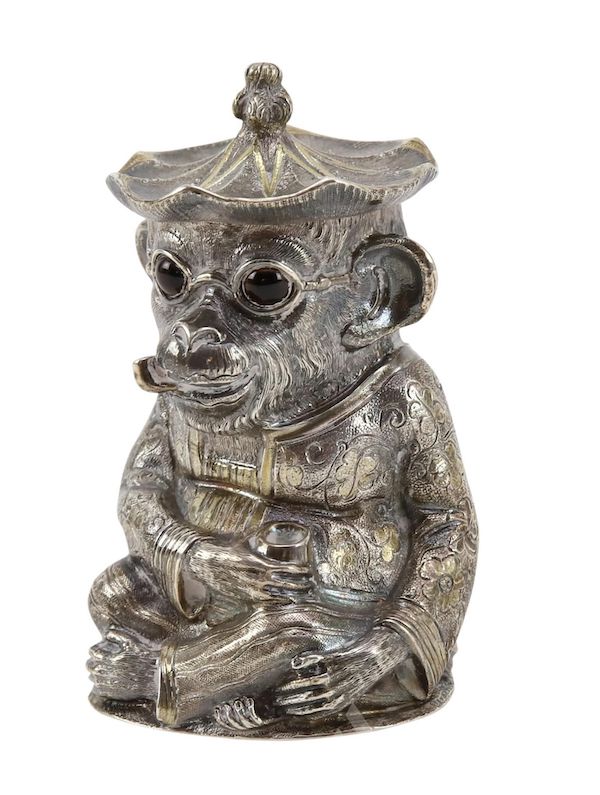
As a silver-collecting category, mustard pots are perfect. There are numerous varieties from across two and a half centuries, and they are small and easily displayed. Unlike some other Georgian domestic silver forms, they remain functional, and most are relatively affordable.
Pricing follows the general rules of English silver-collecting. Most Georgian and Victorian mustards can be bought for between $100-$500, but there is a premium placed on certain makers – the woman silversmith Hester Bateman or the ‘royal’ goldsmith Paul Storr, for example – and collectors can expect to pay more for pieces by Arts and Crafts designers such as Charles Robert Ashbee or Omar Ramsden.
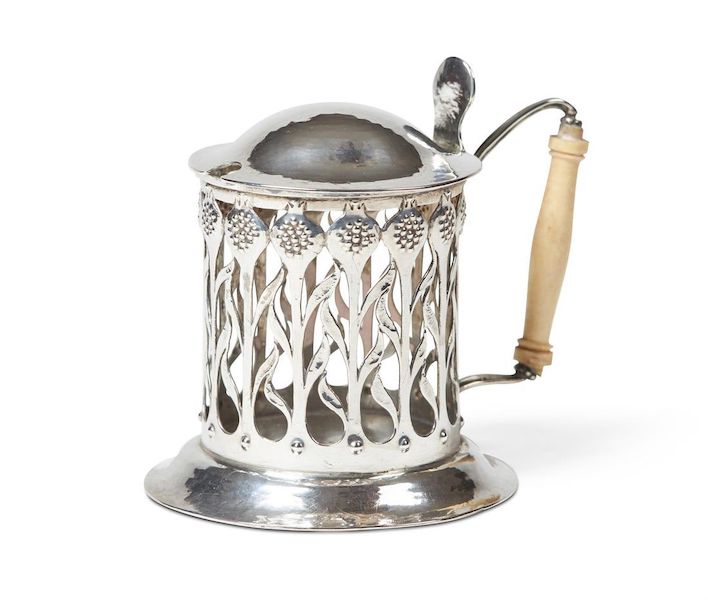
Some relatively simple vessels bearing regional assay marks also have crossover collecting appeal. Most mustard pots were hallmarked in the English cities of London, Sheffield and Birmingham, or in Edinburgh, Scotland, but those struck with provincial English or Scottish marks are much harder to find. For collectors of York silver, a mustard pot with that rare town mark might be worth $2,000 to $4,000.
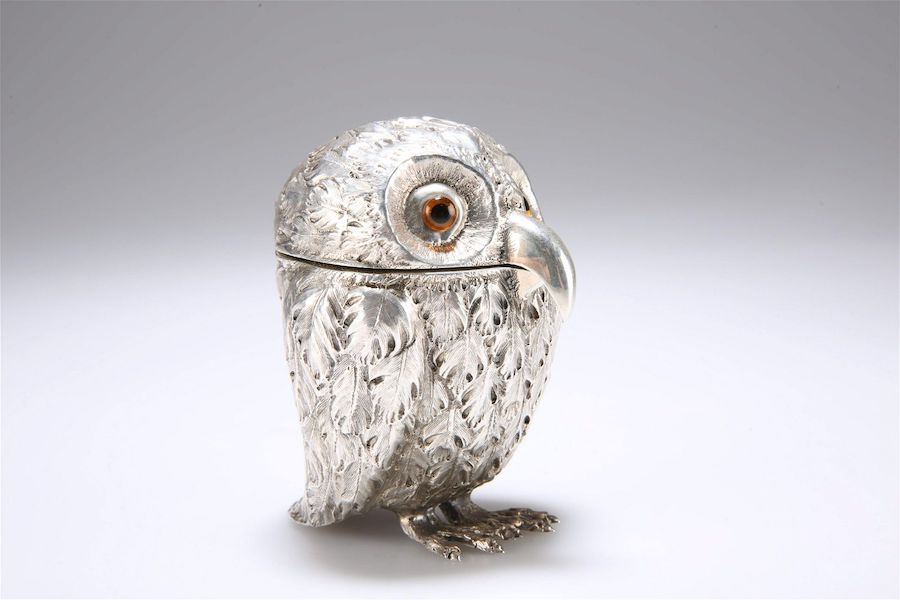
Novelties are also placed at the collecting top table. Victorian and Edwardian models such as the seated Mr. Punch, or the owl with a mouse doubling up as a spoon, are some of the hobby’s most desirable pieces. Expect to pay between $1,000 and $5,000 for period examples.
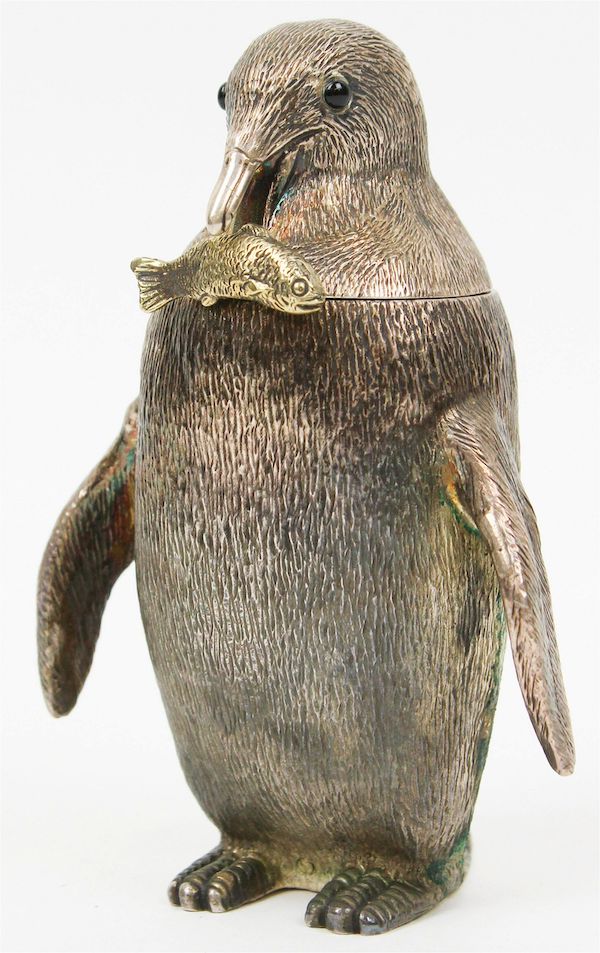
Some of the most popular novelty silver mustard pot designs were reproduced in the post-war era, but even these – notably the frog and the penguin by William Comyns – can bring surprising sums. The top price for a silver mustard pot on the LiveAuctioneers database was recorded at Alderfer Auction in Hatfield, Pennsylvania in June 2020 for a cast and chased vessel dating to 1867, modeled as a monkey in oriental dress. One of the best-known designs by the London silversmith Edward Charles Brown, it was estimated at $1,000-$2,000 but sold at $6,000 with buyer’s premium. That one really did cut the mustard.
[/av_textblock]


